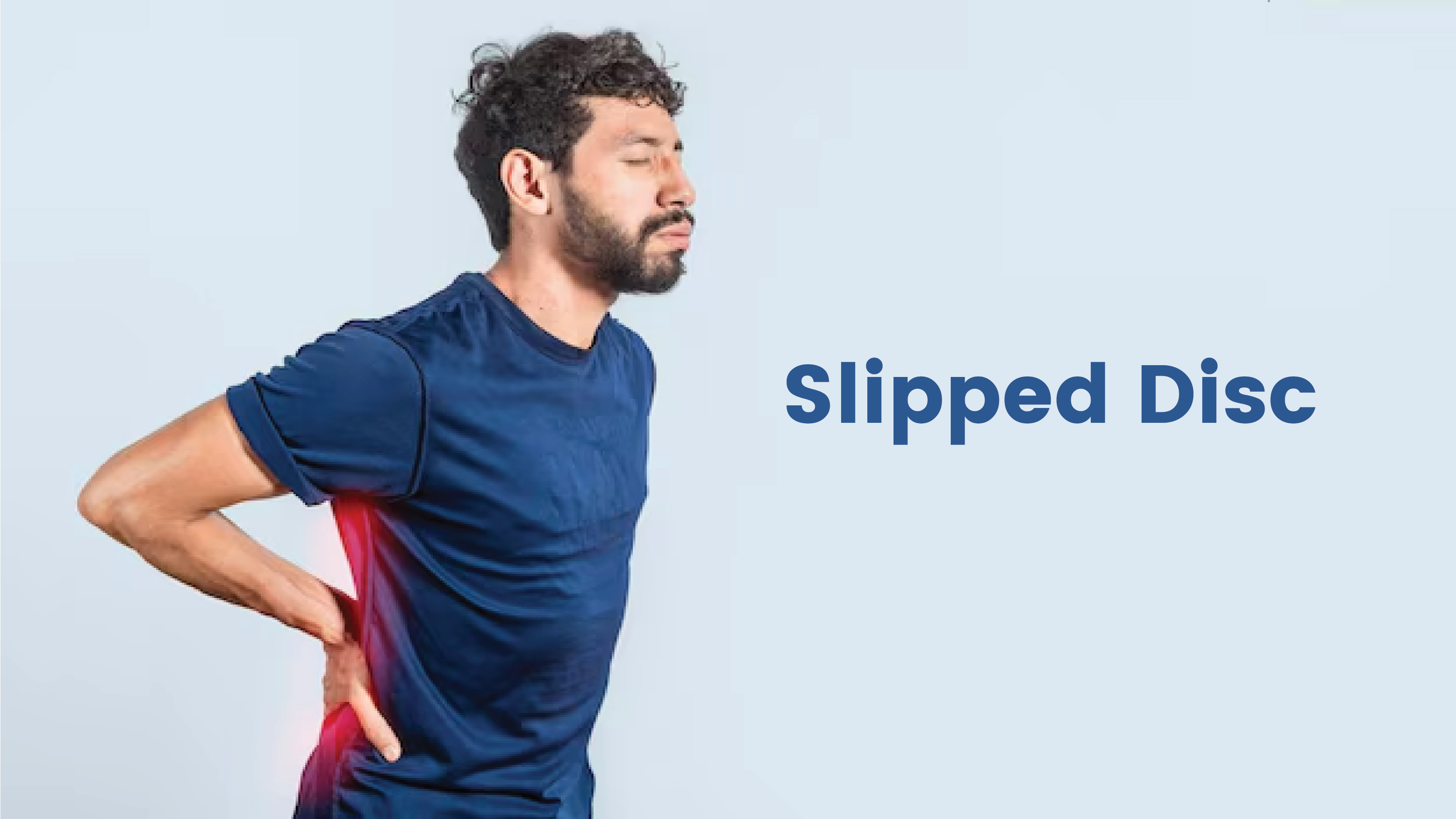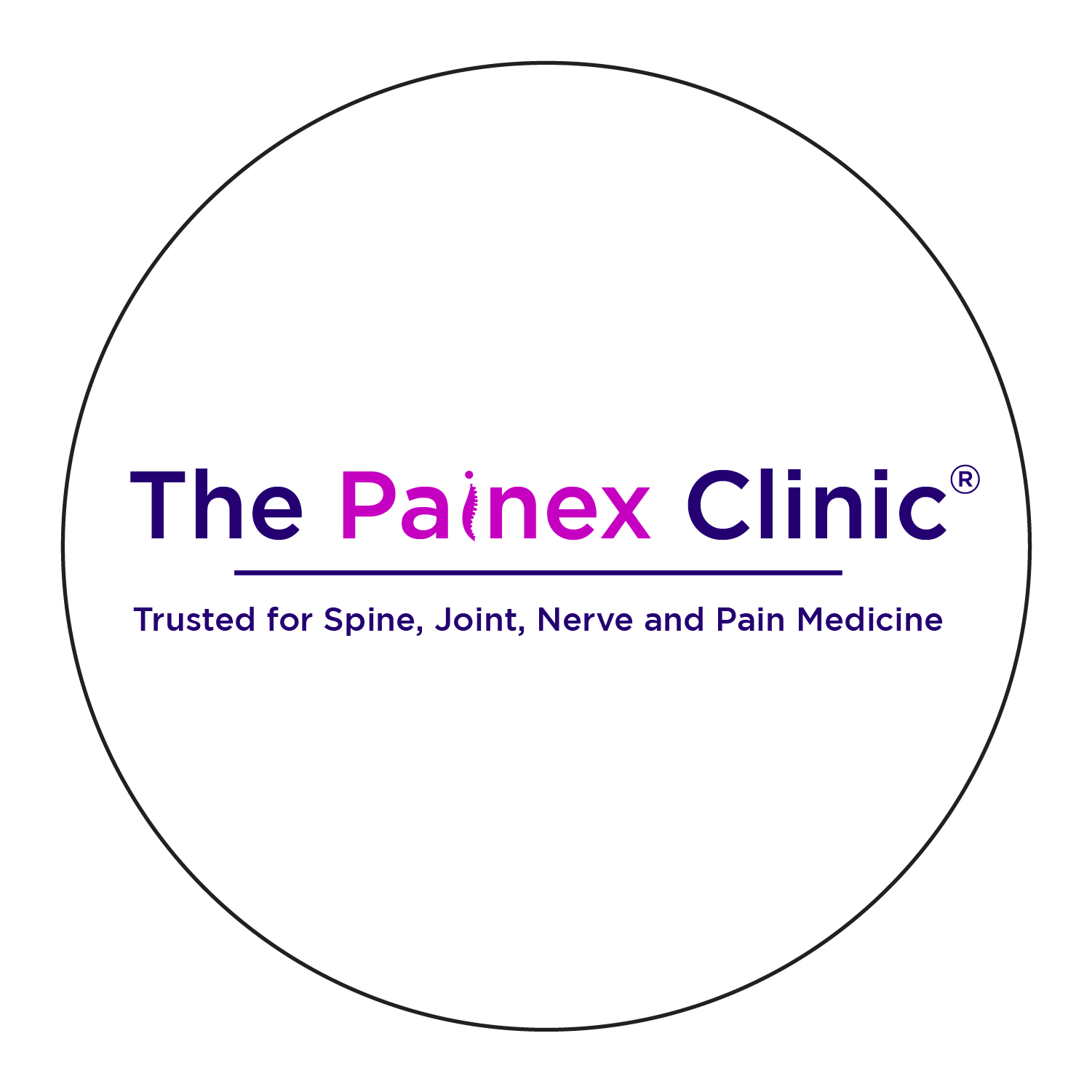The Painex Clinic Conditions
Best Slipped Disc Treatment In Pune

What is Slipped Disc?
A slipped disc, also known as a herniated disc or ruptured disc, is a common condition that affects the disc at various levels in the spine. It occurs when one of the soft discs between the vertebrae in the spine bulges or ruptures, putting pressure on surrounding nerves. This can cause pain, numbness, and weakness, particularly in the back and legs. The condition can vary in severity from mild discomfort to severe disability and may significantly affect a person's mobility and quality of life.
Causes of a Slipped Disc
Slipped discs are most commonly caused by age-related wear and tear, known as disc degeneration. As we age, the discs lose their water content, making them less flexible and more prone to injury. Other factors that can contribute to a slipped disc include:
- Heavy lifting: Lifting heavy objects improperly or lifting beyond your physical limits can put strain on the spine and cause discs to slip.
- Sudden movements: A sudden twist or jolt can lead to a protruding disc.
- Obesity: Excess weight places added stress on the spine, increasing the risk of nerve compression.
- Poor posture: Sitting or standing with poor posture can lead to imbalanced pressure on the spine, contributing to spinal cord pressure.
- Lack of exercise: Weak muscles may not support the spine effectively, leading to lower back pain.
- Sedentary lifestyle: A lack of movement can cause stiffness, increasing the risk of a herniated disc.
Diagnosis of Slipped Disc
A detailed medical history and physical examination are the first steps in diagnosing a slipped disc. In some cases, imaging tests may be required for a clearer diagnosis. These include:
MRI (Magnetic Resonance Imaging): An MRI is the most common and effective imaging technique for detecting a herniated disc. It shows detailed images of soft tissues, including the discs, nerves, and surrounding structures.
CT scan: A CT scan may be used to diagnose vertebral fractures, instability, or bony osteophytes.
X-rays: Though X-rays don't show discs, they can help rule out other causes of lower back pain, like fractures.
Treatment for a Slipped Disc
The treatment for a slipped disc depends on the severity of symptoms. Conservative treatments are often effective, while some patients might need interventions.
- Conservative Treatment
- Rest and Activity Modification: Resting the back and avoiding movements that aggravate the pain can help reduce inflammation and allow healing
- Physical Therapy: Strengthening the muscles supporting the spine and improving flexibility through physical therapy can help relieve pain and prevent further injury.
- Painkillers: Used for a short period to manage sciatic nerve pain and discomfort.
- Ice and Heat Therapy
- Ice and Heat Therapy Applying ice packs or heat to the affected area can help reduce swelling and alleviate pain.
Regenerative Therapy
Regenerative treatments, such as Platelet-Rich Plasma (PRP) and bone marrow concentrate, focus on healing by encouraging tissue regeneration. These treatments involve injecting the patient’s own growth factors into the affected area to repair a protruding disc and support recovery.
Epidural Injections
When pain is severe and not relieved by other methods, an epidural injection may be administered to deliver powerful anti-inflammatory medication directly to the affected area, reducing pain and swelling around the nerve compression.
Radiofrequency Ablation (RFA)
Radiofrequency ablation is a procedure that uses heat generated by radio waves to cause electromagnetic changes in nerve tissue responsible for transmitting pain signals. It is particularly effective for long-term pain management when other treatments have not provided relief.
Endoscopic Surgery
Endoscopic spine surgery is a minimally invasive technique that uses a small camera (endoscope) to remove the herniated portion of the disc. This type of surgery requires only small incisions, leading to faster recovery times and less post-operative pain compared to traditional methods.
Traditional Surgery
Fortunately, only a small percentage of patients need surgery. In cases where other treatments have failed or the disc is severely damaged, spinal surgery may be necessary. Common procedures include:
- Discectomy: Removal of the bulging disc or herniated disc.
- Spinal fusion: Joining two or more vertebrae together to stabilize the spine. Surgery is typically reserved for patients with severe pain or neurological deficits.
Expert Care at The Painex Clinic
At The Painex Clinic, we take pride in offering the expertise of the best spine and pain specialists in Pune, PCMC, India, to treat slipped discs. Our highly skilled team provides comprehensive care, using a variety of advanced treatments tailored to each patient's needs. From conservative therapies and regenerative treatments to minimally invasive procedures, we ensure that every patient receives the most effective and personalized care. Whether you're seeking non-surgical options or considering surgery, The Painex Clinic is dedicated to providing lasting relief and restoring your quality of life. Trust us to guide you on the path to recovery and pain-free living.
Get Pain Relief Without Surgery Today.
Schedule Your Appointment Now!
